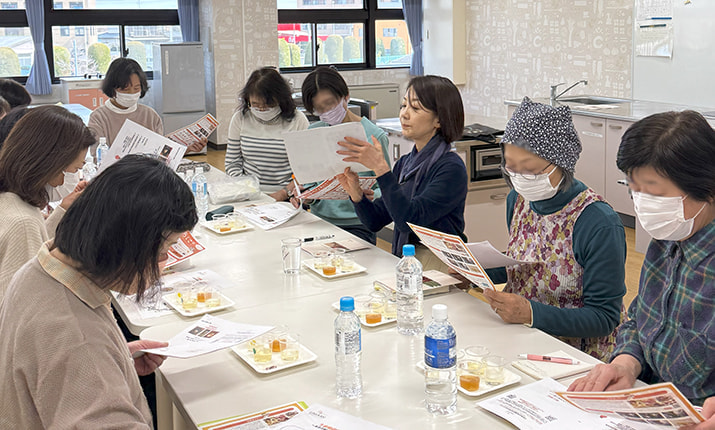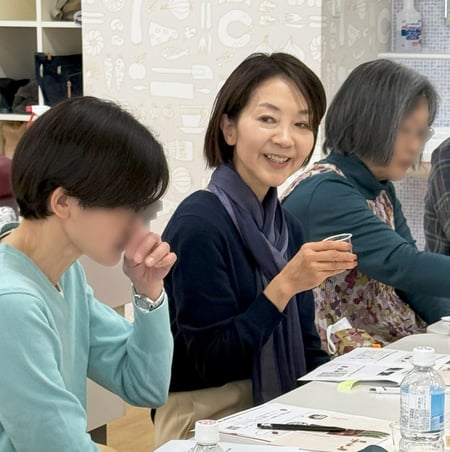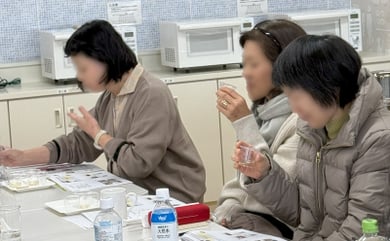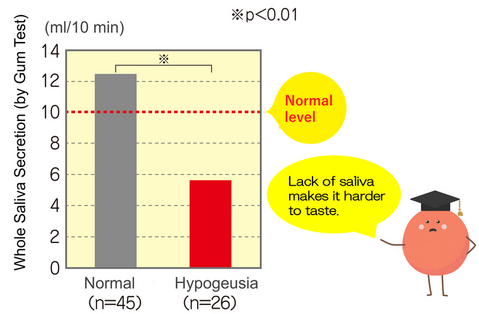A Round-Table Umami Study for Dietitians in Chiba Pref.
February 2025

On February 28, 2025, the Umami Information Center (UIC) gave an umami lecture at Kashiwa city, in response to a request from the “Tokatsu Hokubu (Northern Tokatsu area) Home-based Dietitians Association” in Chiba Prefecture. Participants were dietitians and registered dietitians working in Northern Tokatsu area including the cities of Kashiwa, Matsudo, Abiko, Nagareyama and Noda.
The participants were already familiar with the benefits of dashi and the healthy eating habits based on washoku, the Japanese cuisine, because they have provided nutritional guidance to the general publics on daily basis.
Even so, this time we asked them to go back to the basics and carefully taste each dashi again to check the taste and properties of umami.

The lecture was presented in the form of a round-table session by the lecturer Yasue Kido, a UIC director.
In the first half of the session, she talked about umami basics, such as the story of the Japanese scientists who identified umami ingredients, and how the Japanese word umami has two meanings: “basic taste” and “deliciousness. Then, she offered dried tomatoes and several kinds of dashi to the participants. Through tasting, she reminded them the taste of umami as the fifth basic taste, and explained the qualities of umami.
Tasting the dried tomatoes carefully, participants delicately perceived the characteristics of umami, and commented that they could “felt the roundness,” “felt like my tongue was wrapped around it,” “it tastes just like miso,” “it tastes like umami seasoning,” and “it makes me salivate a lot.
In the dashi tasting that followed, participants tasted “katsuo (bonito) dashi” and “kombu (kelp) dashi” respectively. These are usually tasted together as “ichiban-dashi.” Comparing the two dashi separately and together, they felt the synergistic effect of umami. Then, they conducted an experiment using low-sodium miso soup to know that “umami” can be used to reduce salt content.
In the second half of the lecture, Yasue Kido talked about the health benefits of umami, especially its approach to the problems of taste disorders and nutritional impairment found in the elderly.
A study among 75 people over the age of 65* found that 37% of the subjects showed taste disorders. The ability to taste is also related to physical conditions and appetite.
This research found that elderly people with taste disorders were more likely to report poor physical condition and loss of appetite, and to consume fewer foods than those without taste disorders.
*Satoh-Kuriwada S, et al. Hyposalivation strongly influences hypogeusia in the elderly: Journal of Health Science, 55: 689-698, 2009.
Dry mouth was often observed among the elderly with taste disorders. When saliva is lost, they are unable to taste. This makes food less palatable, leading to a decrease in appetite and poor physical condition. It is possible that an elderly person is suffering from dry mouth when he or she says that meals do not taste good.

As one of the rehabilitation methods for dry mouth, Yasue Kido introduced the kombu water to the participants. It is a method utilizing the property of umami to moisten the mouth with saliva. When they tried kombu water, the participants asked her questions* about the type of kombu and the amount of kombu used in the kombu water.
*Place about 30 g of your favorite kombu in 500 ml of water and refrigerate overnight. For this lecture, we used Rishiri kelp; take it in your mouth for 30 seconds 10 times a day to stimulate your taste buds. (Use up in 2-3 days).
The participants of this lecture were the registered dietitians and the dietitians who are dedicated to the wellness of the residents of the community through the nutritional counseling, such as infant screening and prevention of frailty in the elderly at local health centers and hospitals. It was very impressive for us to see the nutrition professionals eagerly taking notes, recalling their own experiences, and discussing the findings to deepen their understandings.
We hope that correct knowledge about umami and the ways to utilize umami in our daily lives will be transmitted from the dietitians' association to the community and to everyone around them.

